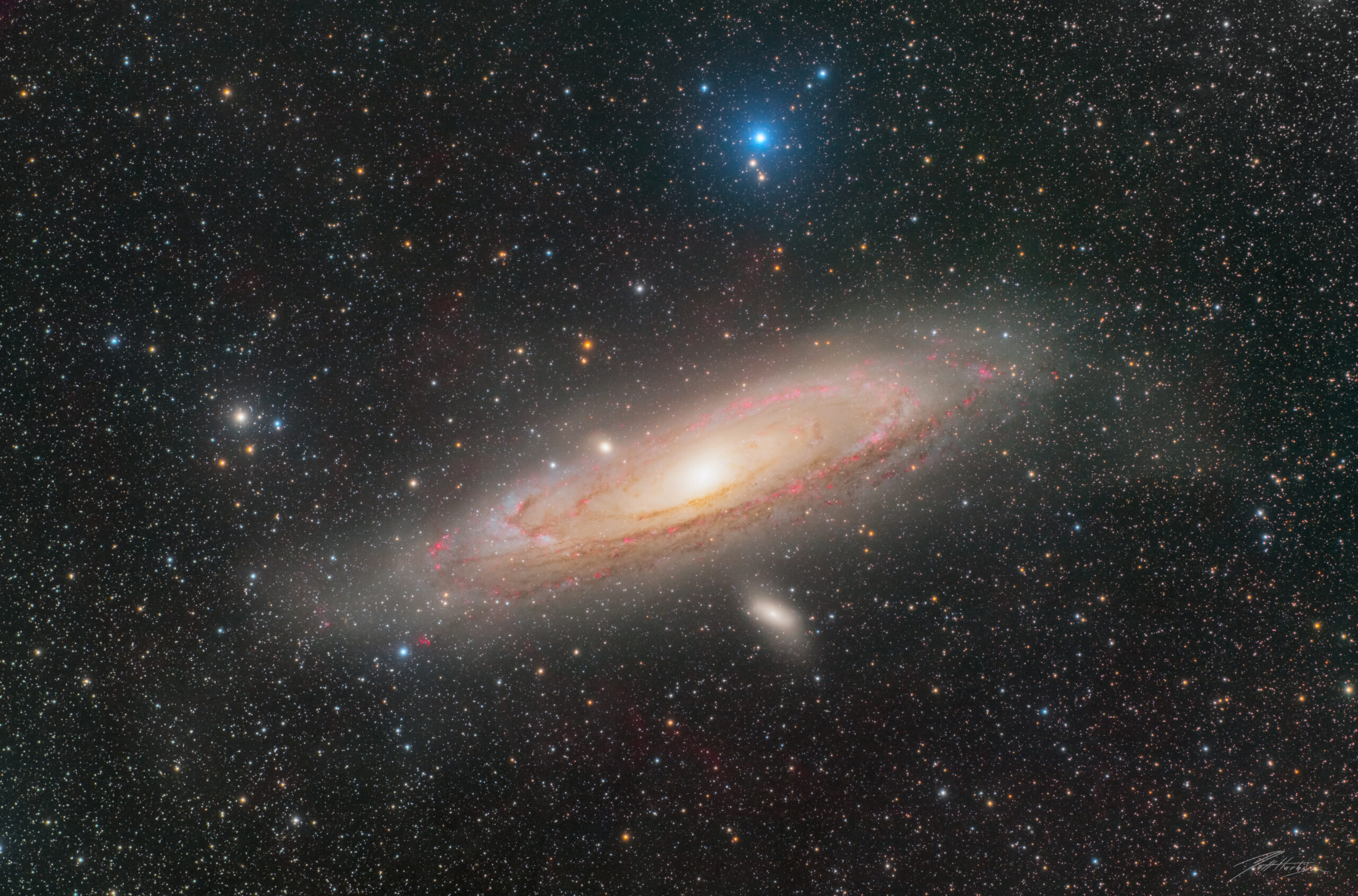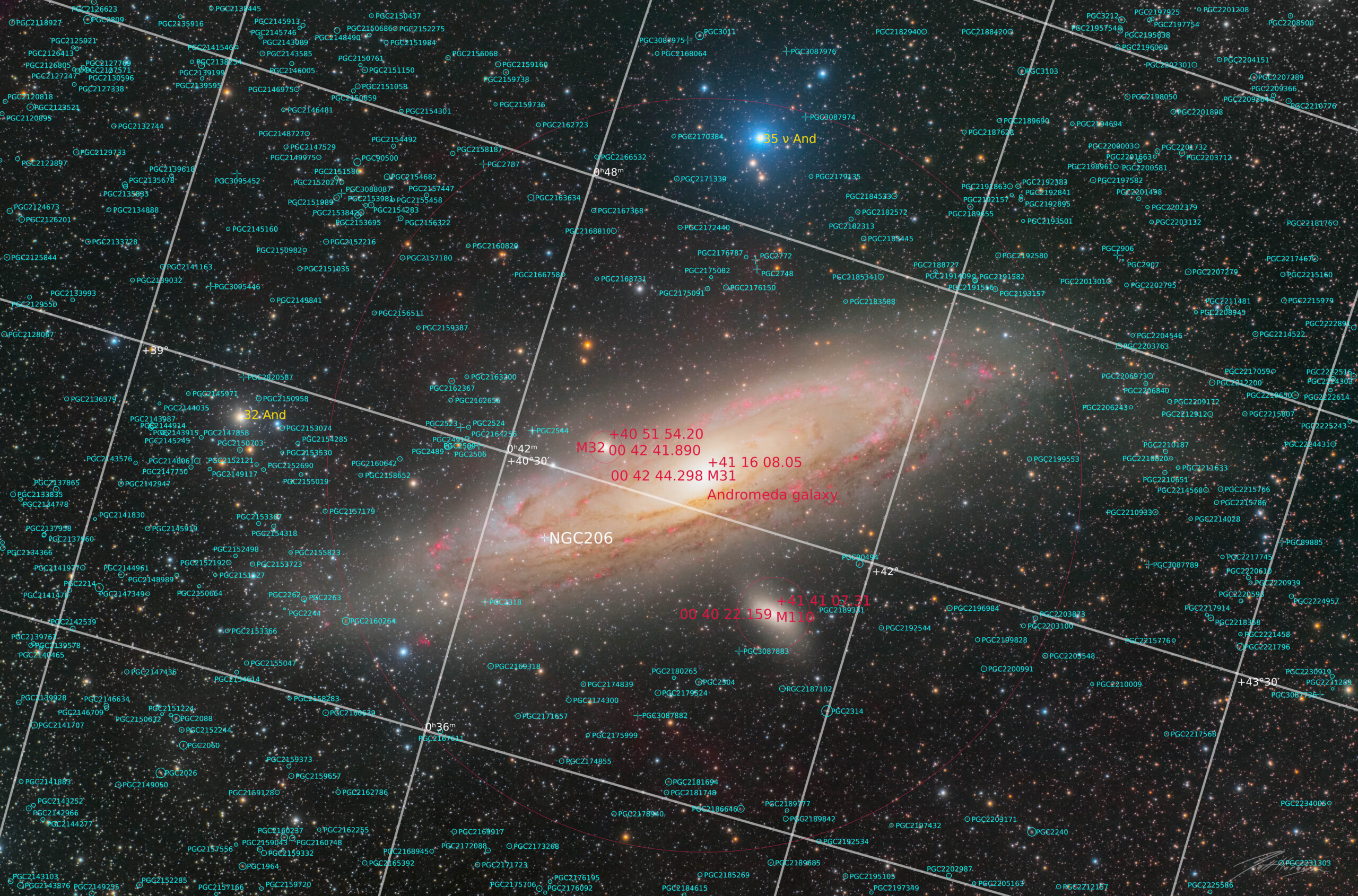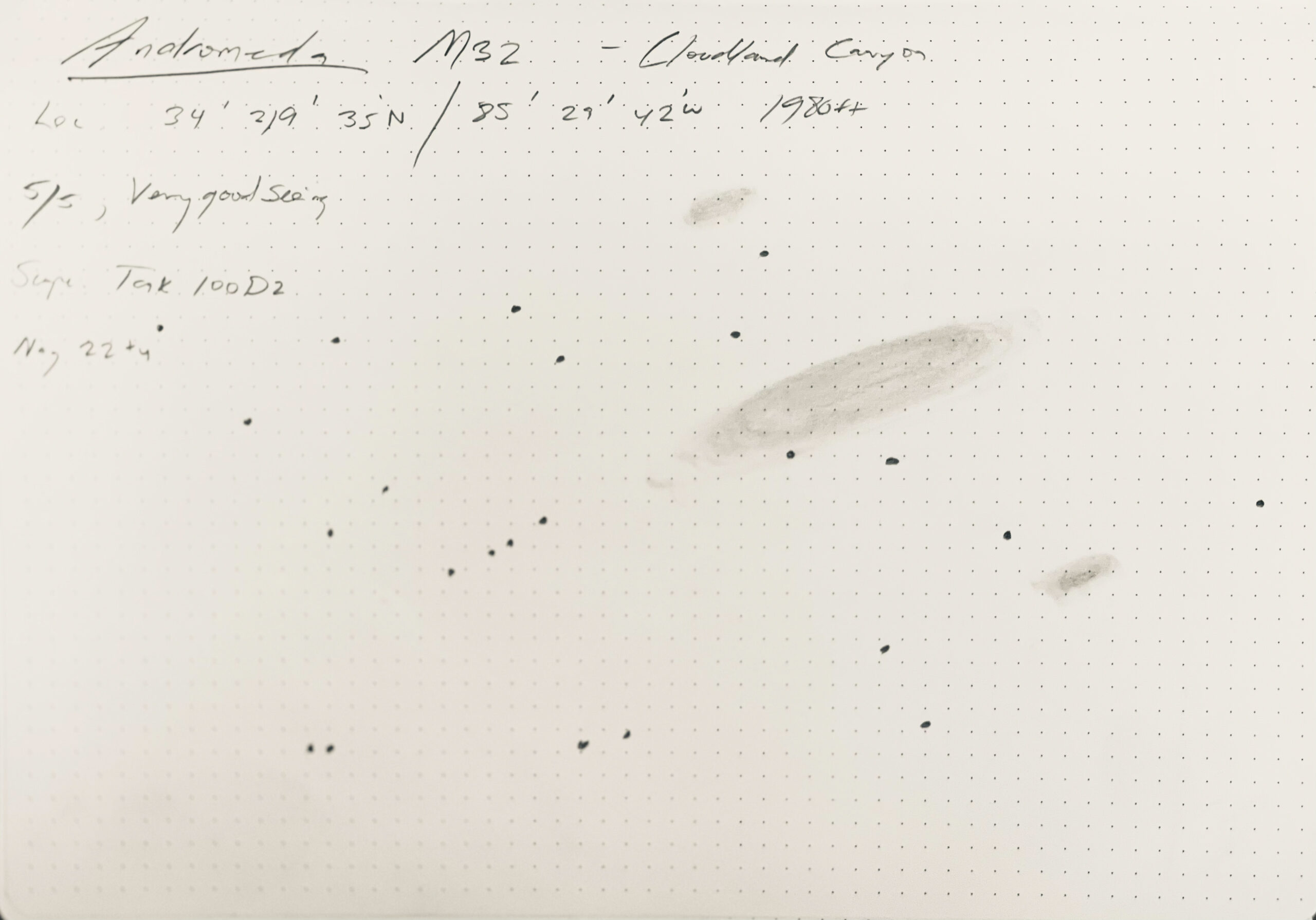Visiting Our Nearest Galactic Neighbor


Over the last few months I’ve been capturing, processing, and integrating data from our nearest galactic neighbor- Andromeda. The Andromeda galaxy lies around 2.537 million light years away. And yes, I said “closest”. Ha. So a few things about the image, here are the details of the data:
Luminance 280 x 45s
Luminance 2 280 x 120s
Red- 280 x 130s
Green- 280 x 150s
Blue- 280 x 204s
Hydrogen 30 x 900s
Total integration time in minutes: 3,478.00 = 57.97 hours
All imaged from Marathon Texas on my Takahashi FSQ106+Tak645 reducer + QHY600 camera. Taken during the new moon and waning/waximg moons of August and September.
In the image, every blue circle you see is another galaxy-file that away for a second… Also, any star you see (that is not a galaxy) is in OUR galaxy. Keep in mind, the detail you see in the Andromeda Galaxy, other than the clouds are stars in our own galaxy. Mind-numbing stuff. In the image, the bright area at the center is the super massive black hole at the center of Andromeda. As matter is pulled into it’s center, it is excited and compressed. This energy is released in the form of light and we see a bright core, just like in our own Milky Way Galaxy.
And Andromeda through the eyepiece is special too. The hazy blob (how it looks to me) is very visible even in the most light polluted skies. I recently had the chance to view it at Cloudland Canyon State Park- one of my societies remote dark spots. Here’s my recent sketch:

It’s a given that my sketch isn’t as grand as the image, but there is still a lot of information to be garnared from the sketch. The satellite galaxies present themselves prominently above and below the core of M32, and the star field lines up with the image above even though I sketched the stars from viewing.
Regardless, the time at the eyepeice on M32 was rewarding. Contemplation of the grand design of a galaxy and the implications of sentient life observing, sketching, and recording a distant galaxy presents the possiblity that there is at least a chance, some intelligent life is looking back at us! Back to those blue circles, i.e. other galaxies, each one statisticlly has billions of stars, and we now know thanks to the work of many great astronomers and their telescopes, most of those stars have two to three rocky planets. From this point it’s easy to create some sort of mathmatical equation to determine the chance of intelligent life. Enter-Frank Drake, the late (just recently deceased) astronomer and astrophysicist. Frank realized that mathmatically speaking, the likelyhood of life around the universe can be mathmatically represented by an equation, or as it’s now known- The Drake Equation.
N = R*fpneflfifcL.
N : The number of civilizations in the Milky Way galaxy whose electromagnetic emissions are detectable.
R* : The rate of formation of stars suitable for the development of intelligent life (number per year).
fp : The fraction of those stars with planetary systems.
ne : The number of planets, per solar system, with an environment suitable for life.
fl : The fraction of suitable planets on which life actually appears.
fi : The fraction of life bearing planets on which intelligent life emerges.
fc : The fraction of civilizations that develop a technology that produces detectable signs of their existence.
L = The length of time such civilizations release detectable signals into space.
So look again at this vast area of space, and if need be grab some binoculars (yes, it is visible in binoculars) or a telescope and do your own observations! Andromeda lies to the east of Casseiopiea and will be rising in the North East, transversing across the meridian and into the west for the better part of the next few months (October-February) should you want to get out and see for yourself!
To learn more about Frank Drake:

Found your info after all!
I’ll send a few files for your offer to see if I might have a tilt in my scope…thanks
Look forward to talking with you!
Thanks,
Ron B
Sounds good, Ron! I’ll respond to your email, but I’ve hid your contact info! Nice to meet you at the Star Party!